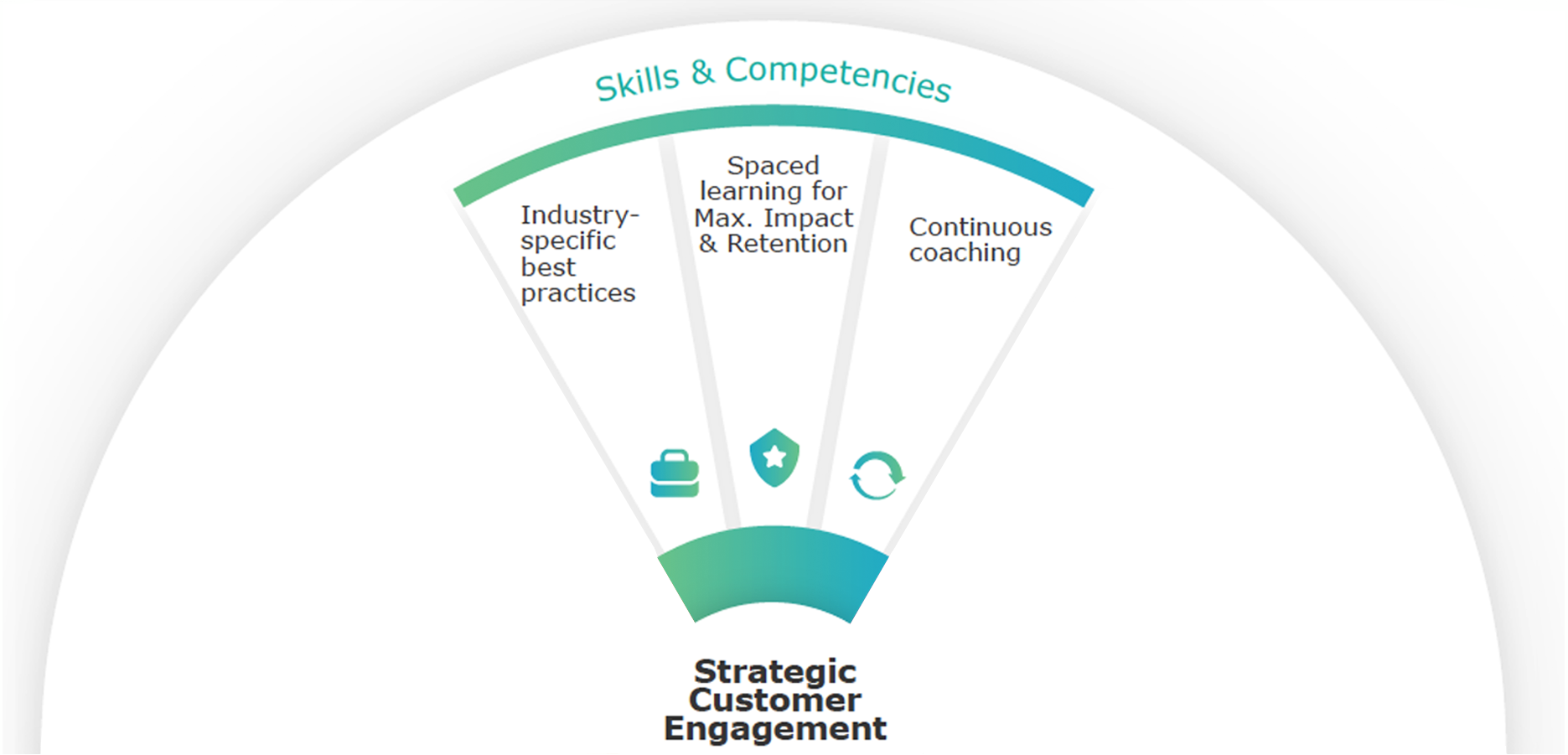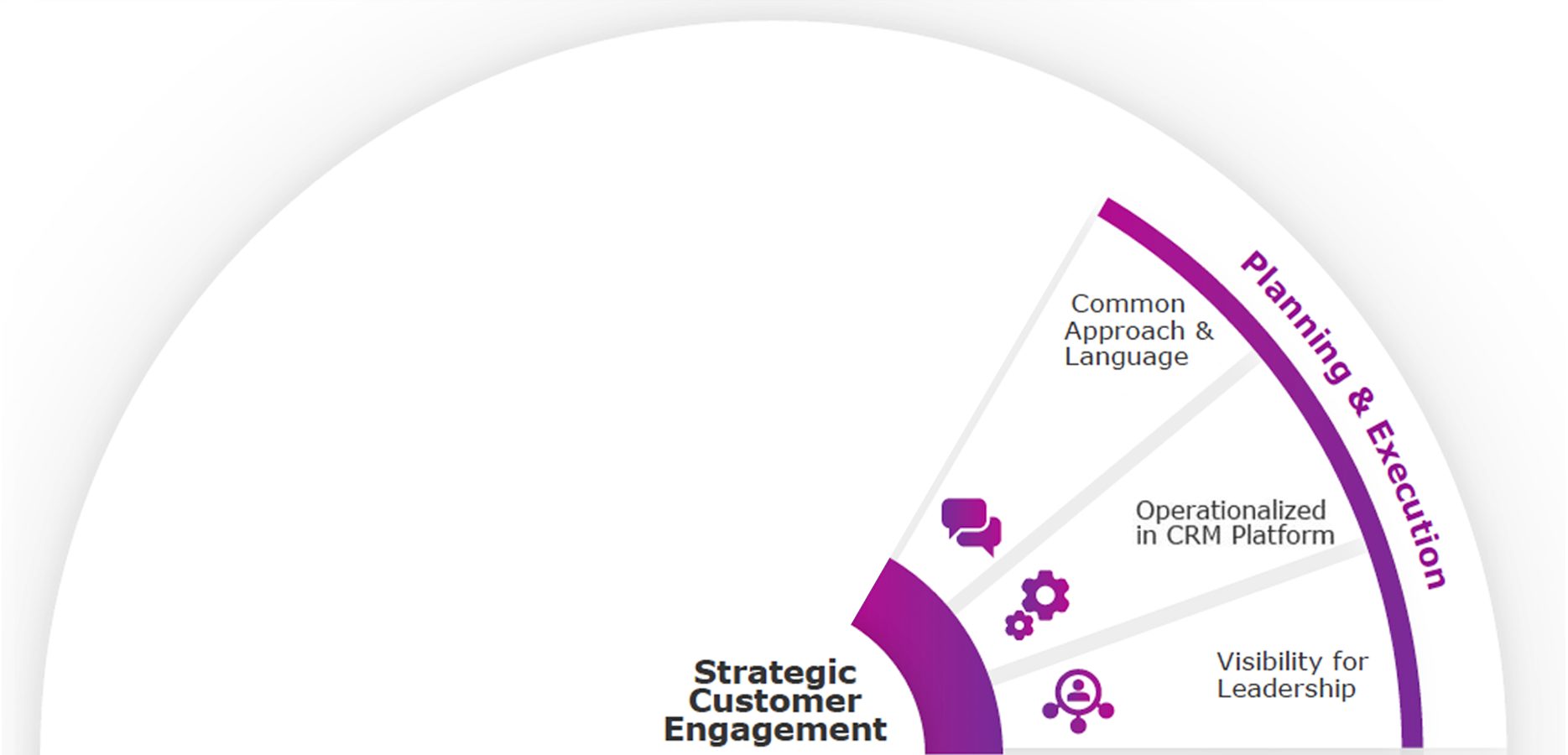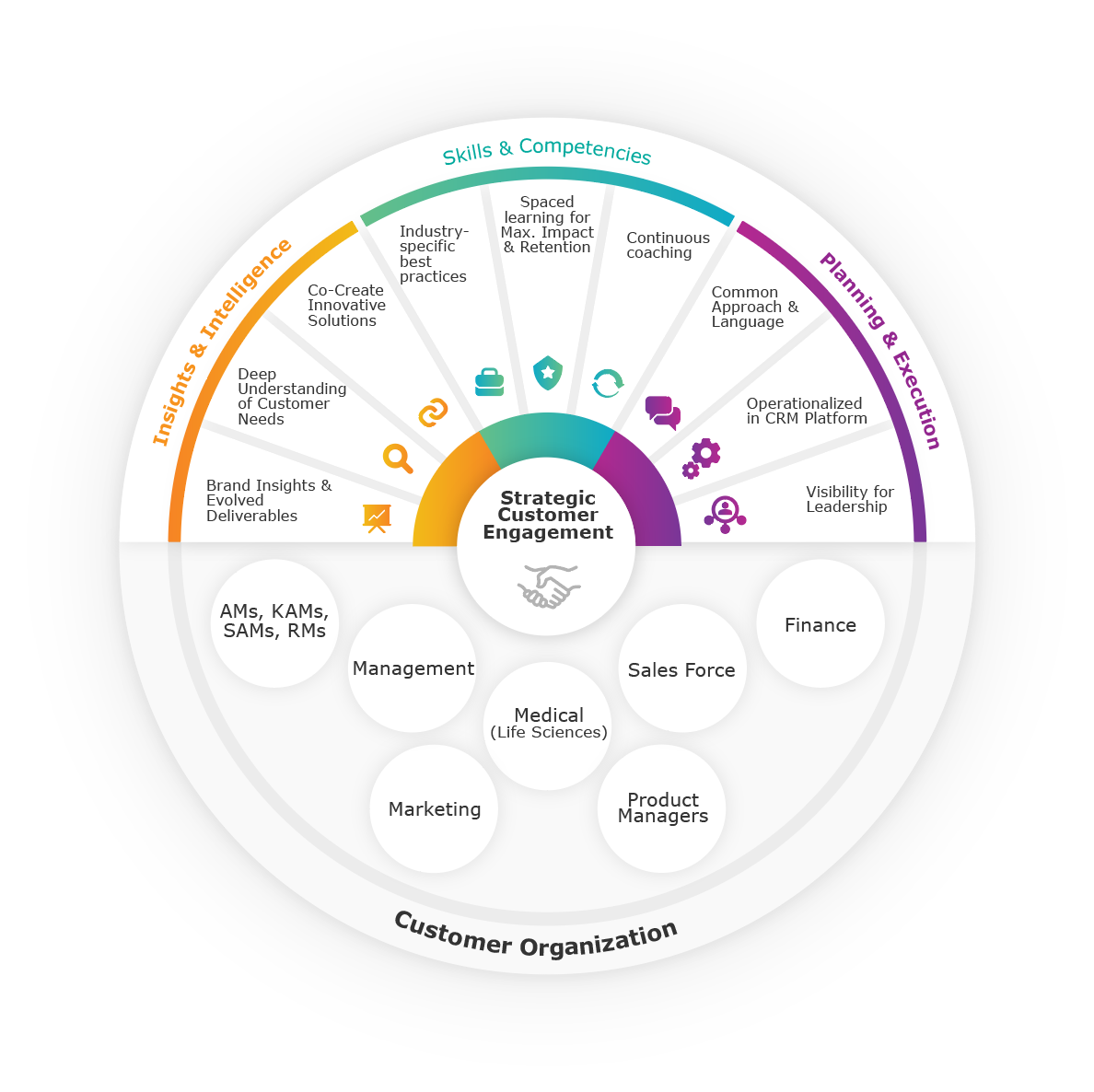Key Account Management
Helping KAM teams in Pharma make the shift from tactical selling to strategic value and impact.At Clarity, we help companies mean more to their customers by working with them and addressing the major components of shifting to strategic account management.
Developing capabilities that enable you to mean more to your customers.
So, what’s standing in your way?
This is what the future of Strategic Customer Engagement looks like.
With more than 15 years of experience working with customer-facing teams in some of the world’s largest companies, Clarity has applied that knowledge into devising three core pillars that help make the shift to strategic customer engagement as simple as:








